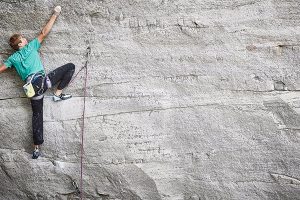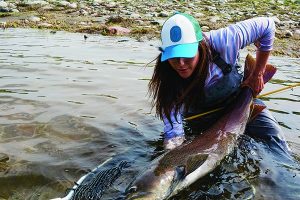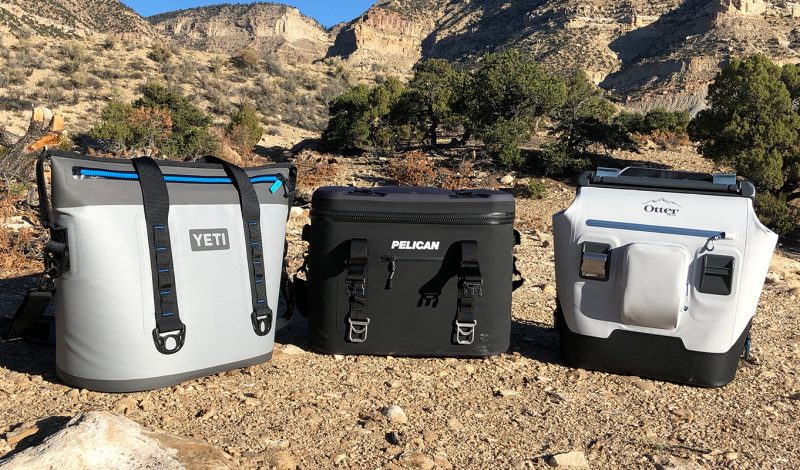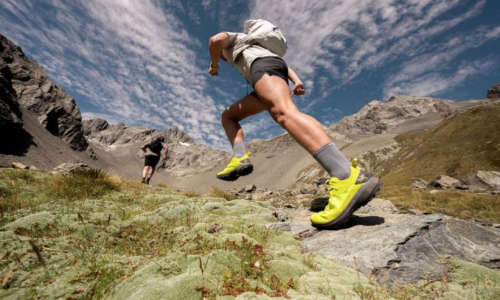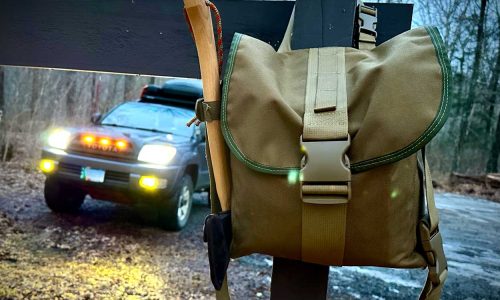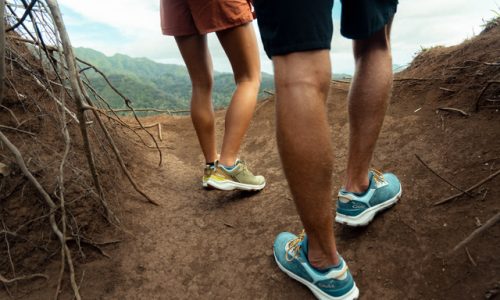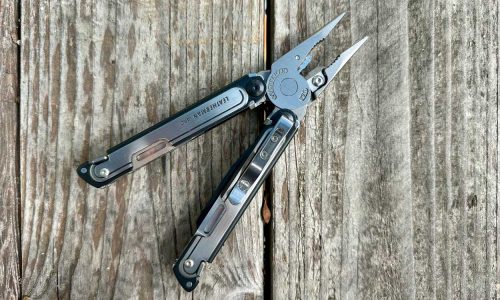Coolers have come a long way since the big green Coleman cooler that my family once had when I was growing up. Family reunions, barbeques, picnics, and even fishing trips featured that steel-clad cooler.
When it was loaded, this green beast was heavy and awkward to carry solo but honestly one of the only choices we had in 1980 to lug around food and cold beverages. Back then, there were only hard-sided coolers and you were more or less tied to a 100-yard radius from your vehicle before you collapsed from carrying the cooler. Fast forward to today, where mobility and the freedom to explore are paramount to adventure enthusiasts around the world. There is definitely still a need for those big coolers; however, those adventurers that thrive on independence have found solace in the world of soft-sided coolers.
In this review, we focus on a class of “premium” soft-sided coolers that have the best ice retention, are made of the highest quality materials and are almost as durable as their hard-sided cousins. This is why premium soft-sided coolers are the fastest growing niche in the cooler market. People are willing to spend the money on something that works as well as a hard cooler that they can take fishing, hunting or on any weekend adventure.
We researched a number of soft-sided coolers in the market and homed in on what we think are the top three premium soft-sided coolers available. For the review, we closely examined the soft coolers and evaluated what makes them so special. We focused on four review criteria: ice retention, portability, functionality, and durability. In testing, we put the products through the extreme rigors of our tester’s adventures, including multiple trips to the mountains in Colorado, Montana, and Washington, as well as to the deserts in Utah, Arizona, and Nevada.
Summary of Each item in the test
Otterbox trooper LT30
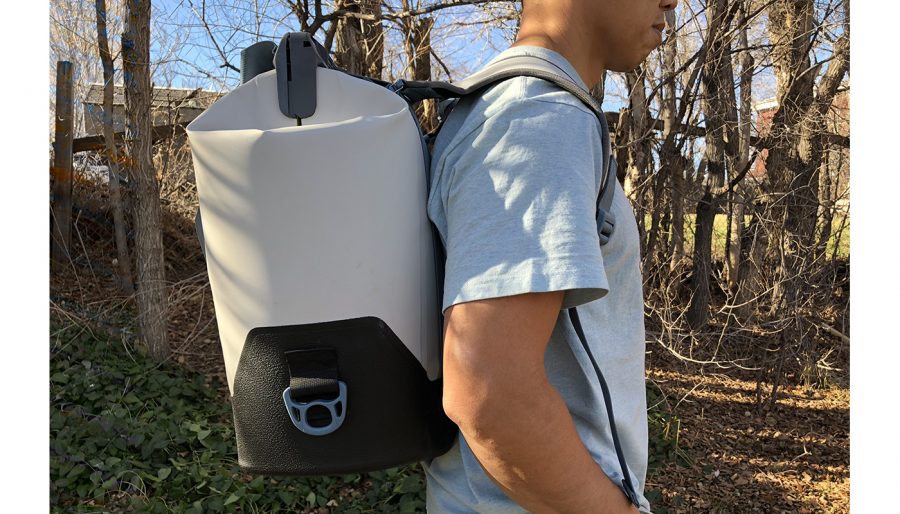
Pros:
- Extra-wide opening for easy access
- Very portable with multiple carrying options
- Heavy-duty base
- Mounting system for accessories
Cons:
- The latching system isn’t intuitive
- One of the external pockets is not very functional
- Foam closure ring could potentially wear out prematurely
The Otterbox Trooper LT30 was a favorite amongst our testers. Its backpack-style carrying system made it stand out from the others because of its portability and functionality. In addition, once you got the hang of the latching system, the Trooper LT30 offered great access to all of its contents with its wide mouth opening. The downside of having such a wide opening was the air exchange that caused slightly lower ice retention times. The Otterbox Trooper LT30 would be perfect for just about any outdoor adventure and Otterbox is the only company to offer a lifetime warranty on their coolers. Lifetime Warranty. Weight: 6.6 lbs. $299
Yeti Hopper Two 30
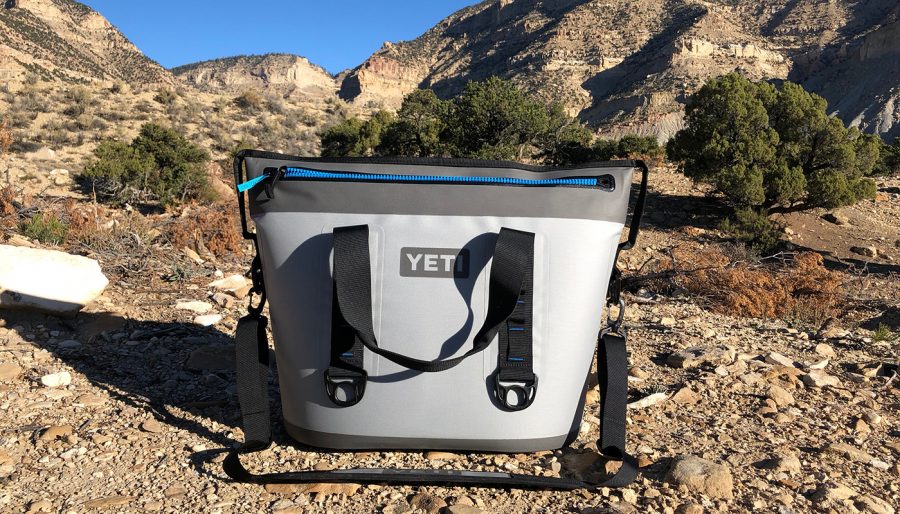
Pros:
- Super heavy-duty DryHide shell
- Waterproof and leakproof HydroLok zipper
- 1.5-inch thick cold cell insulation
- Superior ice retention
Cons:
- Zippered opening is too small and doesn’t stay open
- Tapered shape decreases internal storage
- Not easy to load/unload
There is a reason why Yeti is the biggest name in the premium cooler market: Their coolers are built tougher than just about any other cooler out there, hard-sided or soft. With their highly efficient insulation and small zippered opening, the Yeti Hopper Two held ice almost as long as the many hard-sided coolers. The biggest downfall to this particular Yeti model cooler was also that zippered opening. Our testers found it tough to load and unload resealable food container without getting tangled up in the opening or the zipper. The tapered design also limited the number of larger containers that could fit inside. Regardless, if you’re looking for the toughest cooler to keep your provisions ice cold, look no further than the Yeti Hopper Two 30. 3-year Warranty. Weight: 5.5 lbs. $299
Pelican SC48 soft cooler
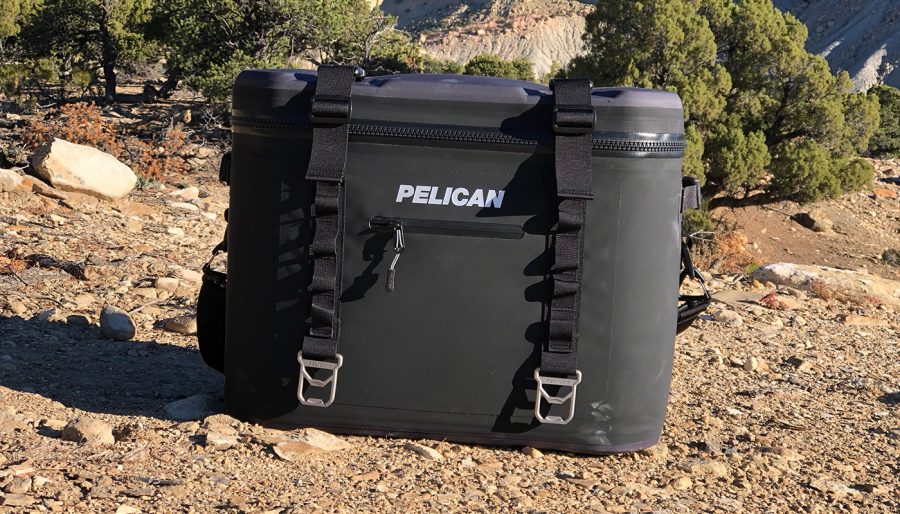
Pros:
- Easy access
- Numerous tie-down points
- Heavy duty double coated TPU outer layer
- The zipper is leakproof and waterproof
Cons:
- Black color absorbs heat
- Hard to carry single-handed
- The external pocket is not very functional
The Pelican SC48 has more of the traditional shape and functionality of hard-sided coolers. The box-like shape allows for a zippered lid that detaches on three sides for a huge opening. Our testers loved how easy it was to load and unload everything inside regardless of the size or shape of the container. The downside to this is that air exchange between hot and cold air is much greater. Despite the larger opening, the Pelican SC48 held its own against the competition, with just slightly reduced ice retention times. In terms of portability, the Pelican cooler was more awkward to carry than the Yeti or Otterbox. The upside of the SC48, though, is that it is one of the biggest soft-sided coolers on the market and definitely one of the most bombproof. 3-year Warranty. Weight: 8 lbs. $329
Side-by-side Test Results
Ice Retention
The highest average time for ice retention goes to the Yeti Hopper Two 30 with an average of 79.2 hours. The Otterbox Trooper LT30 and the Pelican SC48 came close with averages of 74.1 hours and 72.7 hours, respectively. Again, these were the average results of roughly a dozen different times these coolers were used to varying degrees in different environments with different temperature ranges and differing contact with direct sunlight.
We found that the size of the opening had the greatest effect on ice retention times. For example, the Pelican SC48 had a full-zippered lid that flipped all the way open. We believe this had a huge effect on its ice retention times. Unfortunately, the Pelican SC48 also only comes in black, which absorbs the most heat and hence also affects the ice retention times. At the other end of the spectrum is the Yeti Hopper Two 30, which has a much smaller opening (read, less air exchange) and its light grey color is less affected by the heat of direct sunlight. The Otterbox Trooper LT30 was light grey in color like the Yeti but had a large opening like the Pelican. We believe that, despite the larger opening, the deeper design (read, lower fill line) created less air exchange and hence less cold air loss and greater ice retention times.
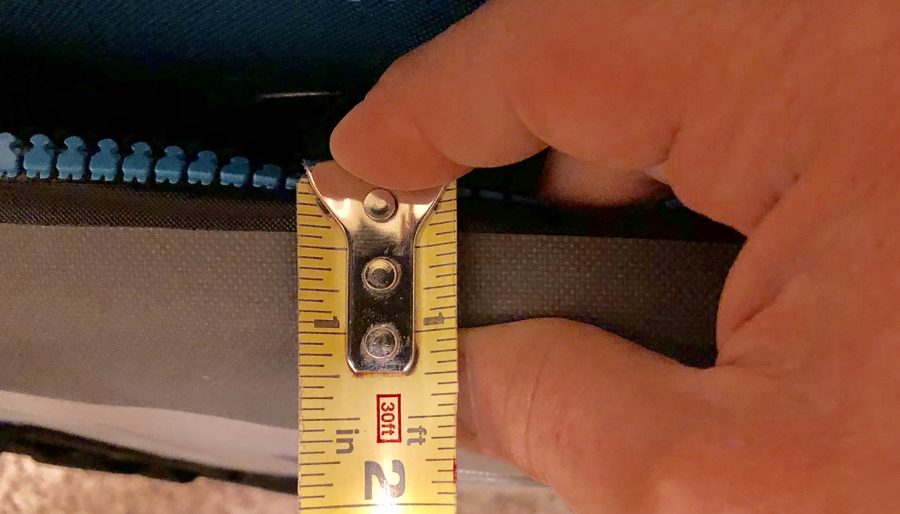
Portability
The Otterbox Trooper LT30 was the clear choice for top honors in this category. The Otterbox Trooper LT30 had the most options for being carried. The hands-down favorite among testers was the backpack style carry, especially for longer hauls. A few testers noted that although it was comfortable to carry as a backpack, there could be improvements made on the design of the shoulder straps which rubbed some testers on their arms.
All three coolers included single shoulder straps, and our testers favored the Yeti Hopper Two 30 since the cooler’s tapered design made it more comfortable to carry. They also liked the variety of grab handles the Yeti had to offer. Carrying the Pelican SC48 – the biggest cooler in the test – felt much like toting a hard-sided cooler with its box-like construction and side grab handles.
The shoulder strap on the Pelican definitely made it more portable than a big hard-sided box, but still awkward when it was loaded down with food and beverages. Some testers were able to lengthen the shoulder strap enough to throw it over neck and shoulders, for a sling-style carry, which made it less awkward.
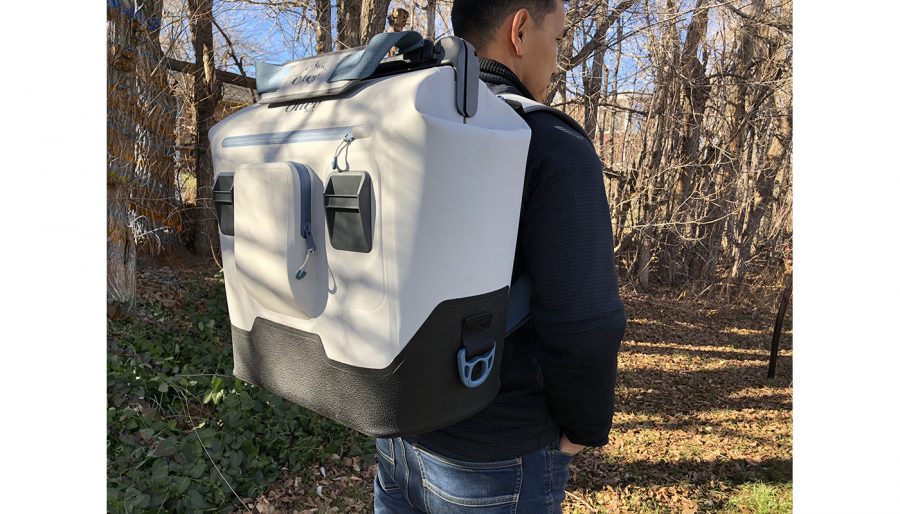
Functionality
The Pelican SC48 was our favorite when it came down to functionality, ease of use, and accessibility to contents. Granted, it was the largest of the coolers, but it could really handle a large amount of food and ice and it was easy to access with its large fold over zippered lid.
A close second was the Otterbox Trooper LT30 with its latch system and rigid frame. Testers found that the latch system wasn’t initially intuitive and fumbled around with it until it became second nature. Unlike the beefy waterproof zippers on the Yeti and Pelican, the Otterbox relied on a relatively thin piece of foam that compresses together to form the seal to become leakproof. We had some concern that this could wear out prematurely – longer-term testing will be needed to determine that, however.
The Yeti Hopper Two 30 was our least favorite cooler as far as accessibility was concerned. The cooler was hard to load and unload because the opening wouldn’t stay open and that zipper kept scraping on our arms when reaching inside.
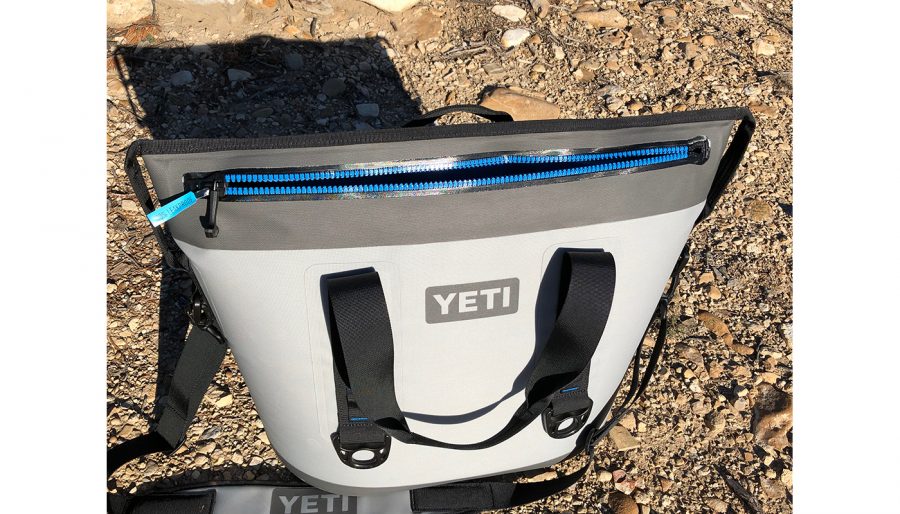
Other functional design features we looked at were the tie-down points and any external storage pockets on the coolers. Both the Yeti and the Pelican came with a plethora of tie downs that were reinforced and virtually unbreakable. The Otterbox only includes tie downs on the sides. While both the Pelican and the Otterbox coolers also came with external pockets – the Yeti had none – we didn’t find the flat pockets on either cooler to be very useful. We did like the small extra pocket on the Otterbox for items such as keys and cell phones. Otterbox also offers the ability to attach more accessories to the outside of the cooler.

Durability
The Pelican, Yeti, and Otterbox were virtually tied when it came to durability and quality of materials in this test. The manufacturers of these products pulled out all the stops when it came to building these coolers. Granted, they are not the same as hard-sided coolers, but for a third of the weight, these coolers are impressive. They all have solid welded seams with the outer material made of laminated TPU – the same material used on whitewater rafts. Pelican and Yeti use a double lamination process for their outer material. This makes them even more puncture and abrasion resistant. These brands also use the same double laminated TPU on the inside which is FDA food grade and mildew and odor resistant. Despite the long days and all the rigors, our testers put these coolers through, there is little to no wear and tear that is obvious on any of the coolers besides a little mud and dirt.
REVIEW CONCLUSIONS
As the innovations around insulation and the durability of materials continue to advance, soft-sided coolers will become a bigger part of the outdoor gear world. These premium soft-sided coolers have proven that there is demand for high-quality durable goods despite the steeper retail prices. Taking a closer look at these premium soft-sided coolers revealed all the nuances and details that make them stand apart in the market.
We began our test by looking from the inside out, specifically at the insulation and ice retention times. Despite the similarities in insulation, we still noticed some differences in the thickness of the insulation and how much design played a role in ice retention times. For example, the coolers in this test varied in sidewall thickness from 0.75 to 1 inch and bottom insulation from 1 to 1.5 inches.
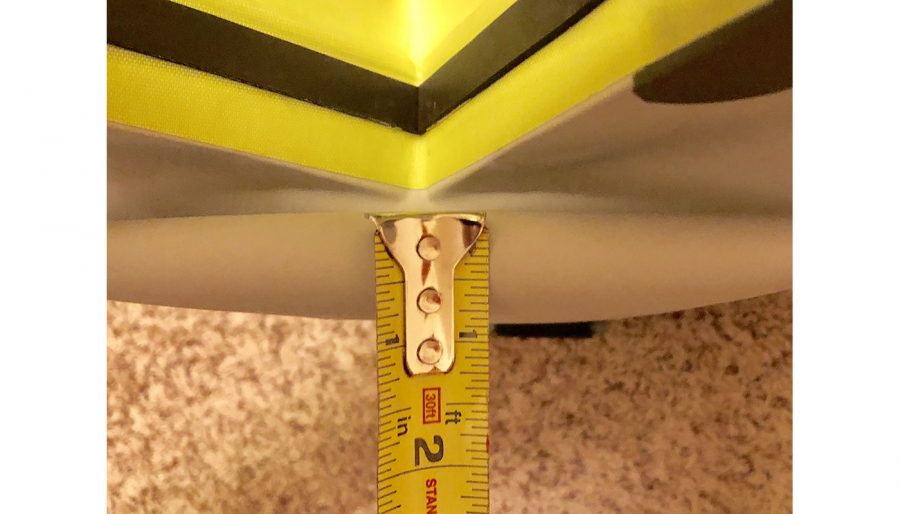
Despite these differences, the design of the opening seemed to play an even larger role in ice retention times with variances up to 8 hours. The Yeti Hopper Two 30 had the smallest opening and as a result, came in with the highest ice retention time but our least favorite to load and unload. Meanwhile, the Pelican SC48 had the largest opening and came in with the lowest ice retention time despite being a tester favorite for accessibility and functionality. This is no coincidence as air exchange is not our friend when it comes to ice retention.
Beyond the insulation, we saw a gamut of design choices in portability from the tester favorite backpack straps of the Otterbox Trooper LT30 to a variety of shoulder straps and grab handles on the other two coolers. The Pelican SC48 has great grab handles for carrying two-handed but its box-like construction made it cumbersome to carry all loaded down with the shoulder strap. However, we found the Yeti Hopper Two 30 to be really comfortable to carry with the shoulder strap due to the tapered design of the cooler.
Functionality and accessibility are almost as important in the user experience as ice retention times. In this case, the Pelican SC48 took top honors because of the easy loading and unloading of food and drinks. From a durability standpoint, there was very little difference in each of the three coolers. They were tossed around climbing areas. They fell out of trucks. They were drug around in the dirt and they got soaked in rivers. Despite some of the subtleties in material choice, there is still virtually no signs of wear and tear on any of them.
Every year there are more coolers being introduced into the market by different companies. It can be confusing where to start and who to trust. Hard cooler or soft-sided? What size should I get? Backpack style or over the shoulder strap? Often times new consumers are swayed by a salesperson in a green vest or a friend with an opinion or brand affiliation. Our advice: Don’t just look at the price tag. Do your research and look closely at the design and think about how you’ll be using your cooler. In the end, buy what’s right for you, your budget and your needs.
TEST METHODS:
Each cooler was used for a period of roughly 45 non-consecutive days on various road trips, climbing days, weekend fishing and camping trips, as well as for parties and gatherings. All the coolers were used simultaneously in an effort to get the most consistent results and feedback from our testers. Each cooler was subjected to the ambient heat of a parked car in 90-degree weather as well as direct sunlight for periods of time. We used 10-pound bags of ice as a standard every time we filled each cooler. The amount of food or beverages in each cooler was commensurate with the amount of ice in a 2:1 ratio. Every time a cooler was opened and closed, the other coolers were also opened and closed for the most consistent and accurate results. Each tester rated the coolers based on four different categories: ice retention, portability, functionality (ease of use), and durability.
Ice retention was our first category for review and typically the one folks are most interested in. We tested the soft coolers in real-world applications by putting in cold food and beverages from the refrigerator and roughly putting twice the amount of ice in each cooler. In the end, ice retention was timed from when ice was placed in the cooler until there were no more ice cubes seen, regardless of the internal temperature of the cooler. Each of our coolers was shaped and sized differently and had varying sizes to their openings. Ultimately, all the coolers were within a half day of each other with ice retention largely due to the different designs and the size of the openings.
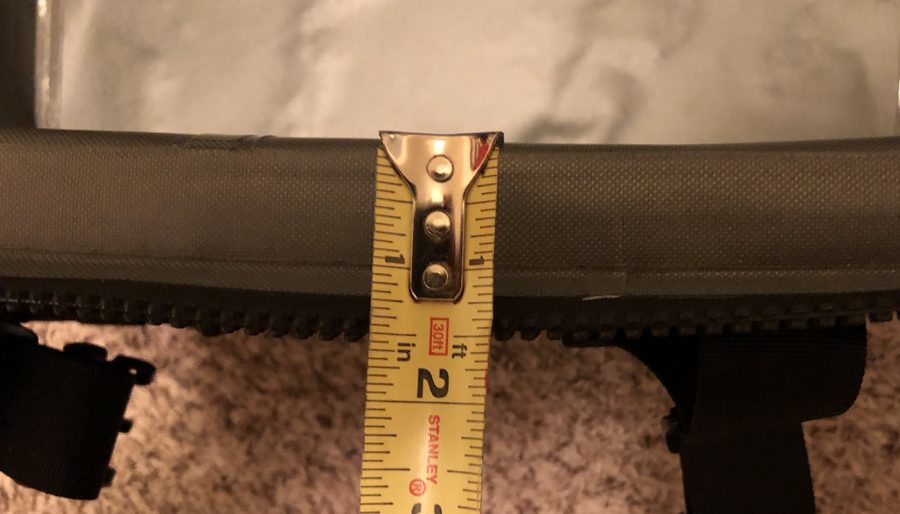
Portability was the second category of importance in rating each cooler. One of the major advantages of soft-sided coolers is their light weight which allows adventurers the ability to go places with their coolers easier. All of the coolers in this test ranged from five to eight pounds empty. This is important because the weight can add up quickly when you consider adding ten to fifteen pounds of ice, food, and beverages. Soft-sided coolers typically offer a variety of ways to be carried. Single shoulder straps were found on each cooler tested and are probably the most common way to carry these coolers. In the field, we found that the shape of the coolers partly influenced the carrying comfort of the coolers. Grab handles are also found on all the coolers in this test. Although they are convenient for quick moves, they wouldn’t be the first choice for long distance carrying. The Otterbox Trooper LT 30 was the only one in the test with the ability to be carried as a backpack, making it the easiest to carry long distances.

We also focused a lot on the design and functionality of each cooler. To us, functionality is defined more specifically as ease of use and accessibility to the contents of the cooler. Design directly influences ice retention as well as portability. In this category, we looked more closely at the functionality of the different openings of the coolers from Otterbox’s plastic latching system with its rigid frame to the easy access zippers on the Pelican SC48 and the Yeti Hopper Two 30. All three had very different styles of openings that affected access to food as well as ice retention. We also looked at other design features such as tie-down points and the functionality of external pockets and accessories.
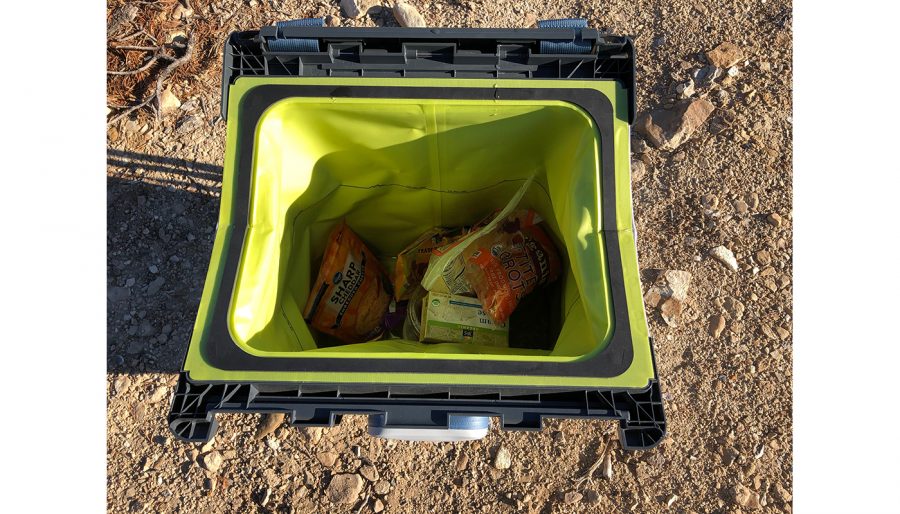
Our last criteria were durability and quality of materials. This is what makes premium coolers really stand out from other soft-sided coolers available at much lower retail prices. We’ve all heard the saying that, “You get what you pay for.” Well, that is very true when it comes to these coolers. However, premium coolers also come with a premium price tag.
Durability and quality of materials literally and figuratively make or breaks the cooler. In this category, we found more similarities in the three soft coolers than differences. Each of the coolers consisted of an exterior made of durable TPU coated nylon that is waterproof, puncture and abrasion resistant, and UV and chemical resistant. In addition, each of the coolers also has food grade liners inside that are mildew and odor resistant and anti-microbial. All the seams on the cooler are welded and not stitched making each cooler stronger and more waterproof with the exception of the openings.
The Yeti Hopper Two 30 and the Pelican SC48 both claimed that their zippers were waterproof while the Otterbox Trooper LT30 uses a heavy-duty plastic latching system with a foam trim ring to maintain the air-tightness of its contents. We had hesitations about the durability of each design, mostly because zippers eventually wear out and plastic can become brittle and break as well. We found that each manufacturer pulled out all the stops when building these coolers because they are seriously bombproof.

